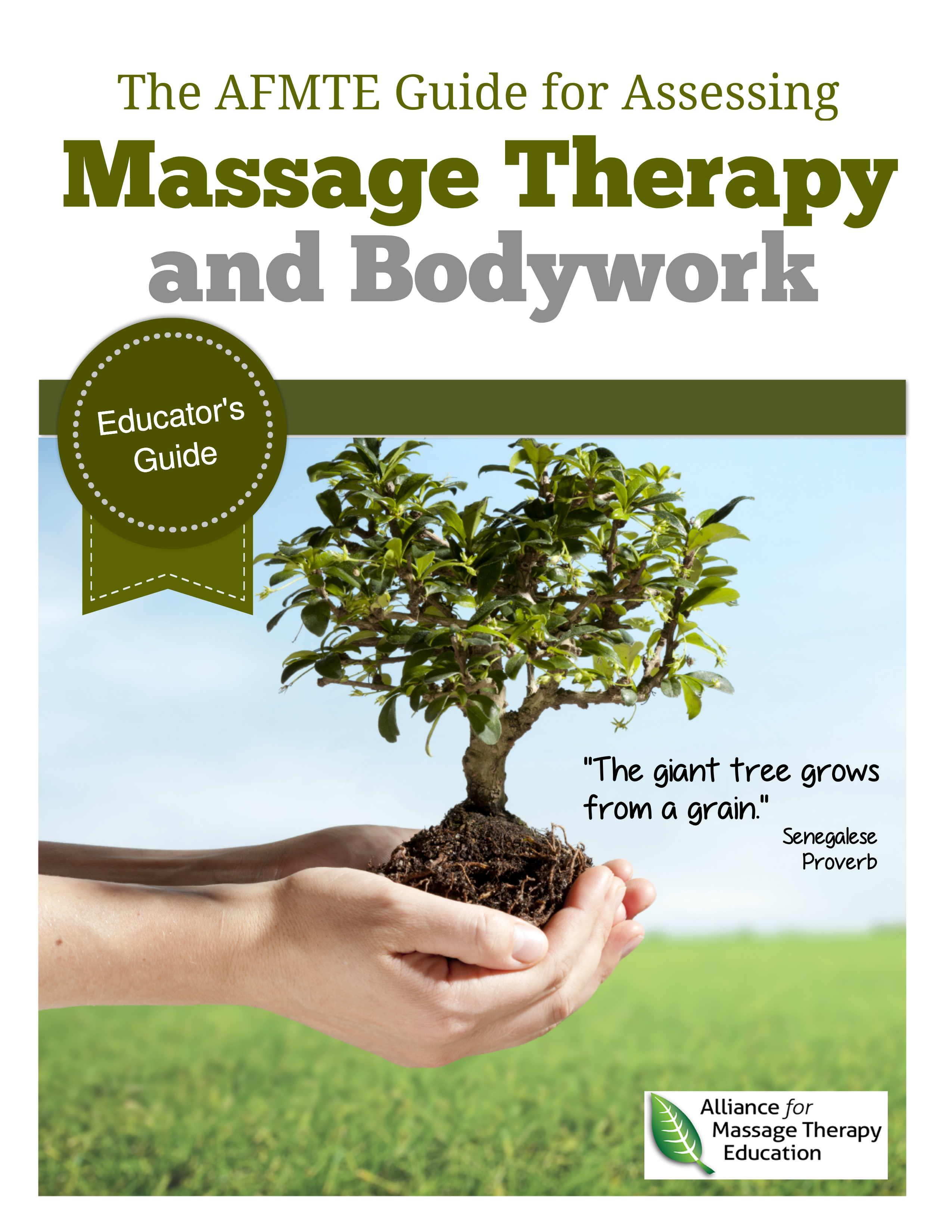 The AFMTE Guide for Assessing
The AFMTE Guide for Assessing
Massage Therapy and Bodywork Educators
This guide was developed to help educators assess themselves and assist administrators to effectively develop faculty assessments for the required level of mastery of each of the Core Competencies.
The guide contains information about types of assessments and how to select the appropriate method for the specific material presented. Our hope is that this guide helps you better understand how to apply the Core Competencies, how to assess each type of competency, and be able to reference the table as a way to create similar tables for all the Core Competencies.
To effectively assess a competency, you must be able to identify measurable outcomes and the tasks necessary to demonstrate the requisite level of mastery. The sample table of Standard One includes the competencies with examples of associated measurable outcomes, assessment types, and identifiable tasks. Details about assessment methods and outcomes can be found in Sections 2 and 3.
The guide concludes with a listing of additional resources and a glossary.
To Download your copy of The AFMTE Guide for Assessing Massage Therapy and Bodywork Educators, enter your information below, and we will email you the guide as a PDF!
The table of contents is included below along with direct links to the Assessment Guide, Table, and Classroom Observation Assessment and the Faculty Evaluation Forms.
I Introduction
Overview of the Assessment Guide
Disclaimer
Overview of the NTESP
Overview of the Core Competencies
II The Assessment Process
Assessing Educators
The Purpose and Benefit of Assessments
Basic Characteristics of an Effective Assessment Model
Assessment Plan Overview
The Six Steps of an Assessment Cycle Process
III Identifying Assessment Methods
Defining Student Learning Outcomes
P.F. Drucker SMART Model
Criteria for Selecting Assessment Methods
Direct and Indirect Assessment Method
Types of Direct and Indirect Assessment Measures
Summative versus Formative Assessment Methods
Examples of Summative and Formative Assessment Measures
How to Use the Assessment Table
Standard One Sample AFMTE Assessments Table
Assessment Table Glossary
V Appendix
References and Additional Sources
Sample Assessment Forms
Classroom Observation Assessment Form
Faculty Evaluation Form
The material for this guide was provided by Gloria Lawrence. Cherie Sohnen-Moe and Stan Dawson collaborated with Gloria to determine the focus and content to be included in the guide. The Assessment Table was produced by the NTTCDC Committee: Dawn Hogue (chair), Gloria Lawrence (BOD Liaison), Iris Berman, Su Bibik, Brent Jackson, Sandy Grover Mason, Juliebeth Mezzy, John Morgan, and Brenda Rayner.
